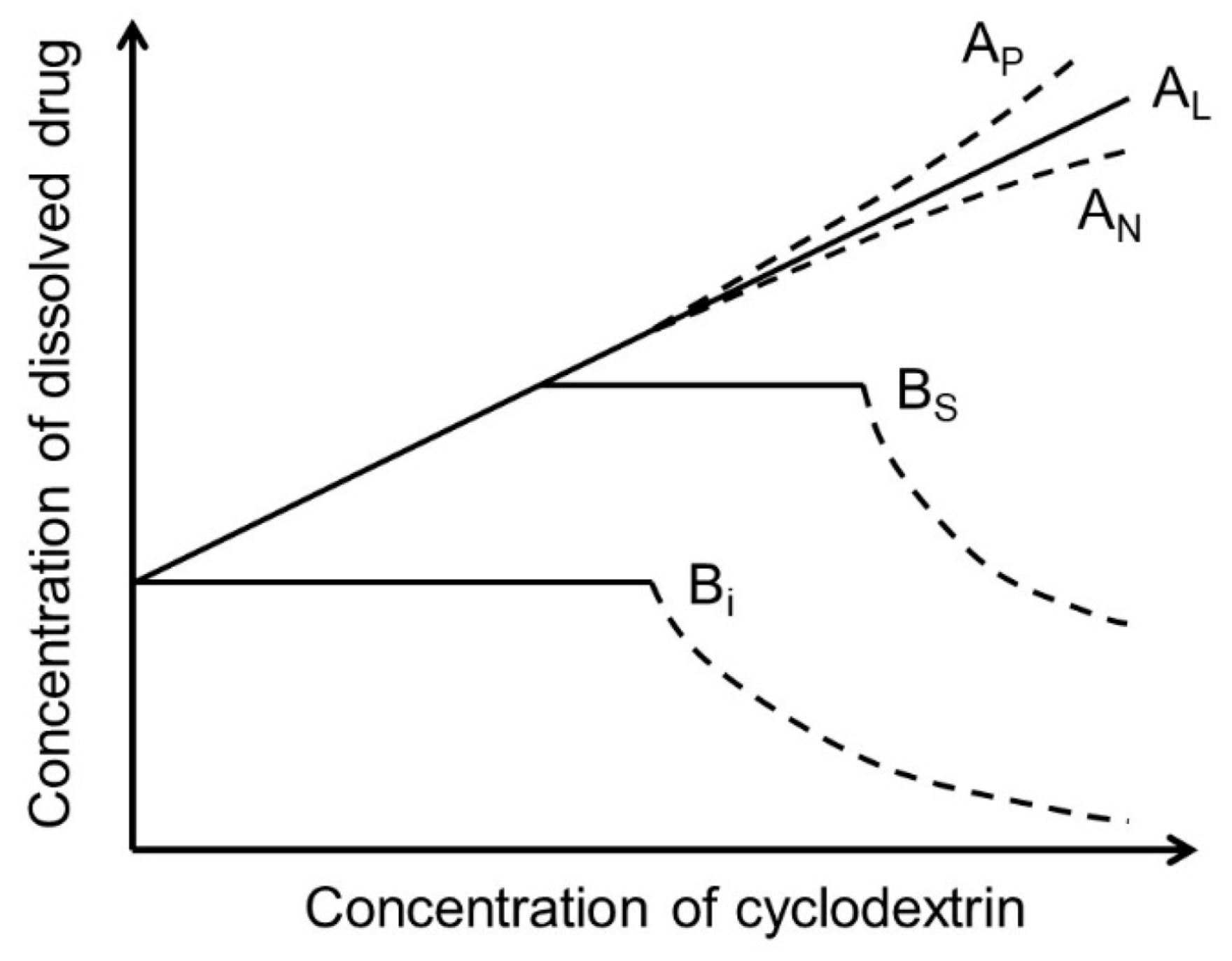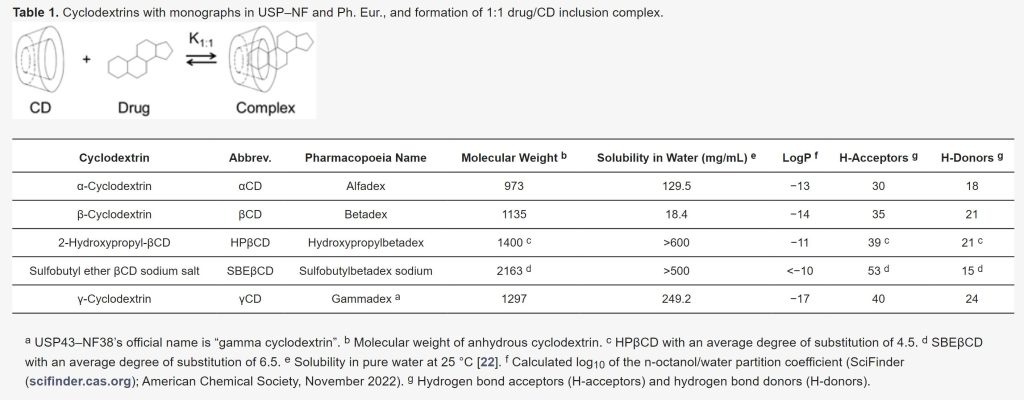Anomalous Properties of Cyclodextrins and Their Complexes in Aqueous Solutions

Cyclodextrins (CDs) are cyclic oligosaccharides that emerged as industrial excipients in the early 1970s and are currently found in at least 130 marketed pharmaceutical products, in addition to numerous other consumer products. Although CDs have been the subject of close to 100,000 publications since their discovery, and although their structure and properties appear to be trivial, CDs are constantly surprising investigators by their unique physicochemical properties. In aqueous solutions, CDs are solubilizing complexing agents of poorly soluble drugs while they can also act as organic cosolvents like ethanol. CDs and their complexes self-assemble in aqueous solutions to form both nano- and microparticles. The nanoparticles have diameters that are well below the wavelength of visible light; thus, the solutions appear to be clear. However, the nanoparticles can result in erroneous conclusions and misinterpretations of experimental results. CDs can act as penetration enhancers, increasing drug permeation through lipophilic membranes, but they do so without affecting the membrane barrier. This review is an account of some of the unexpected results the authors have encountered during their studies of CDs as pharmaceutical excipients.
Introduction
About half a century ago, a group of cyclic oligosaccharides called cyclodextrins (CDs) emerged as enabling excipients for solubilization and stabilization of poorly soluble drugs in aqueous solutions. They rapidly gained the attention of pharmaceutical formulators in their constant search for new ways to solubilize and stabilize drug candidates. Currently, CDs can be found in at least 130 marketed pharmaceutical products, as well as in numerous other industrial products, including food, cosmetic, and toiletry products, most of which have been marketed during the past few decades [1,2,3,4,5]. CDs were first described as bacterial digest of starch by Antoine Villiers in 1891 [6]. In the following decades, their chemistry, structure, and physiochemical properties were investigated, including their ability to form water-soluble inclusion complexes of poorly soluble compounds [1,7,8,9,10,11,12,13].
In the beginning, only small amounts of relatively impure CDs were available, and this hampered their industrial applications; however, in the 1970s, biotechnological advances allowed large-scale production of pure CDs and their industrial application as enabling excipients. Since their discovery, CDs have been the subject of close to 100,000 publications, including about 61,000 peer-reviewed scientific articles and about 32,000 patents, most of which have been published during the past few decades (SciFinder; American Chemical Society, February 2023). Hence, scientific and industrial interest in CDs is significant and rapidly growing. Nevertheless, CDs are still surprising investigators with their unexpecting and, sometimes, hard-to-explain properties. This is an account of some of the unexpected results the authors have encountered during their studies of CDs as pharmaceutical excipients. It starts with a short theoretical background that might help to explain some of these CD oddities.

Download the full article as PDF here Anomalous Properties of Cyclodextrins and Their Complexes in Aqueous Solutions
or read it here
Loftsson, T.; Sigurdsson, H.H.; Jansook, P. Anomalous Properties of Cyclodextrins and Their Complexes in Aqueous Solutions. Materials 2023, 16, 2223. https://doi.org/10.3390/ma16062223
Read more on “Binders“ here:


